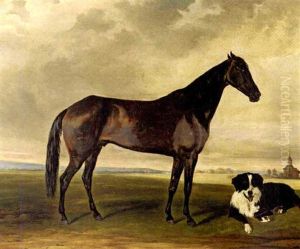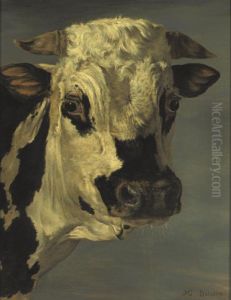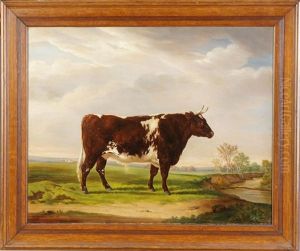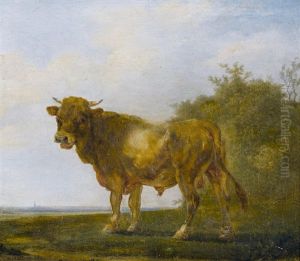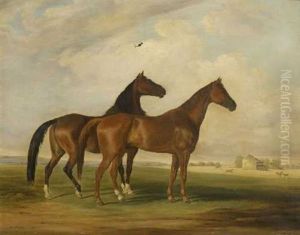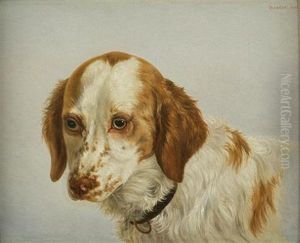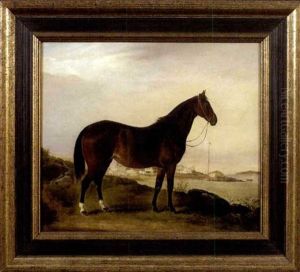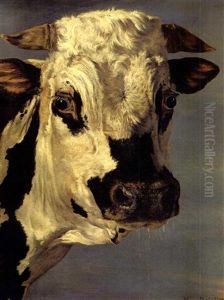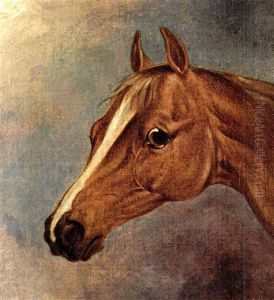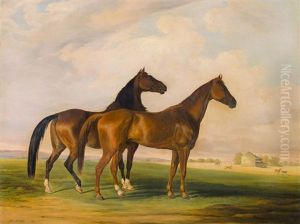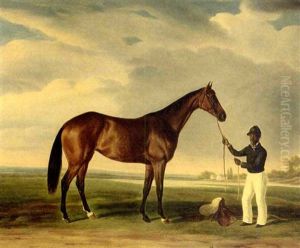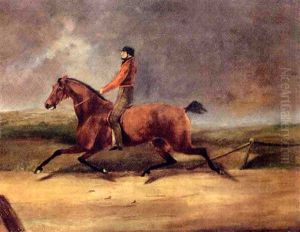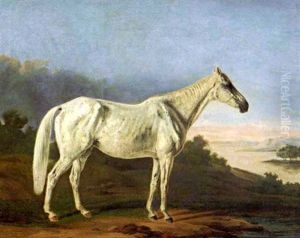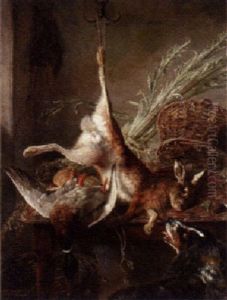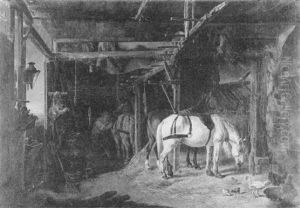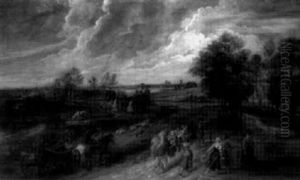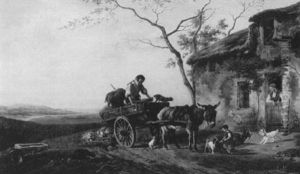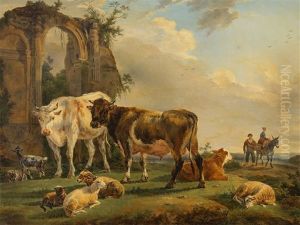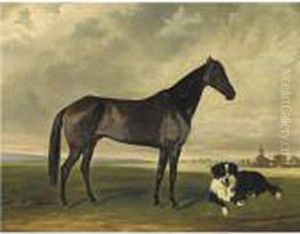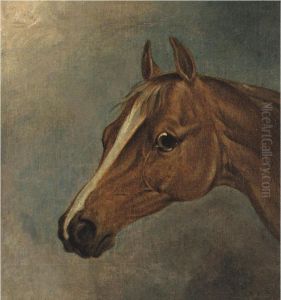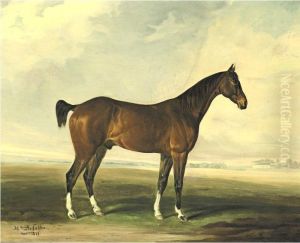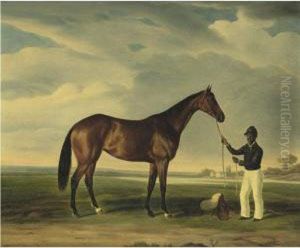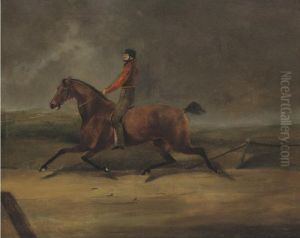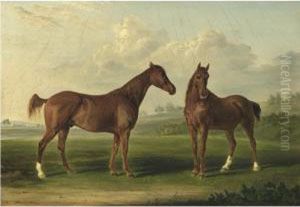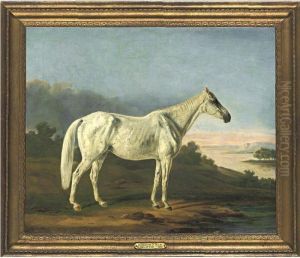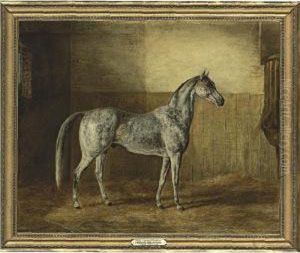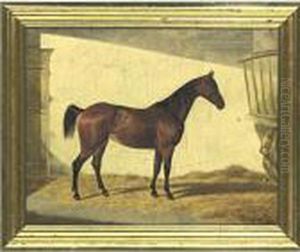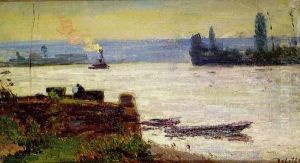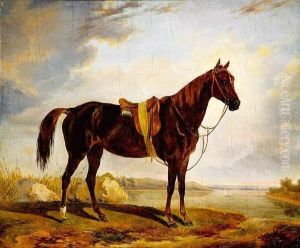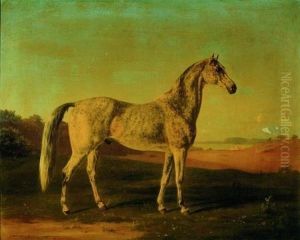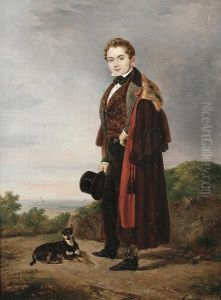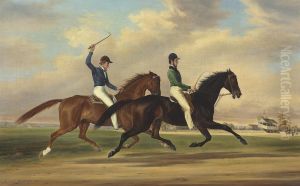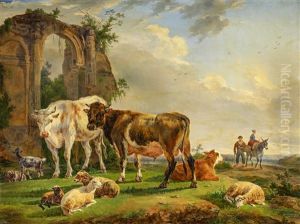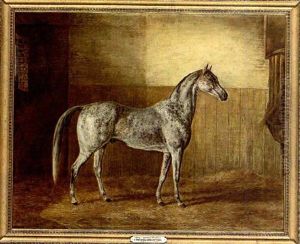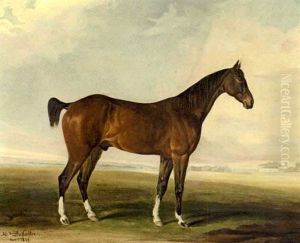Henri Delattre Paintings
Henri Delattre was a French painter born on January 20, 1801, in Douai, France. He is recognized primarily for his landscape paintings that capture the essence of the French countryside, particularly the areas surrounding his hometown. Delattre was part of the French Romantic movement, which emphasized emotion, individualism, and the beauty of nature. His work is characterized by a vivid portrayal of natural scenes, often infused with a sense of tranquility and a deep appreciation for the rural landscapes.
Delattre's journey into the arts commenced under the tutelage of his father, who was also an artist. This early exposure to art and his natural talent laid the foundation for his future career. He further honed his skills by studying at the École des Beaux-Arts in Paris, where he was influenced by the works of other landscape painters of the time. Despite facing the challenges common to artists of his era, including financial instability and the struggle for recognition, Delattre remained dedicated to his craft.
Throughout his career, Delattre exhibited his works at various salons and exhibitions, gradually gaining recognition for his contributions to French landscape painting. His paintings often depicted the serene and idyllic landscapes of northern France, capturing the changing seasons, the play of light on the countryside, and the simple beauty of rural life. Delattre's work was not limited to landscapes alone; he also explored historical scenes and portraits, although these were less prominent in his oeuvre.
Henri Delattre's legacy extends beyond his paintings. He played a role in inspiring future generations of landscape artists in France and beyond. His commitment to capturing the beauty of nature in its many forms has left a lasting impression on the art world. Delattre passed away on October 28, 1876, in Douai, leaving behind a body of work that continues to be celebrated for its contribution to the Romantic movement and landscape painting. His works are preserved in various museums and private collections, attesting to his enduring influence in the realm of art.
